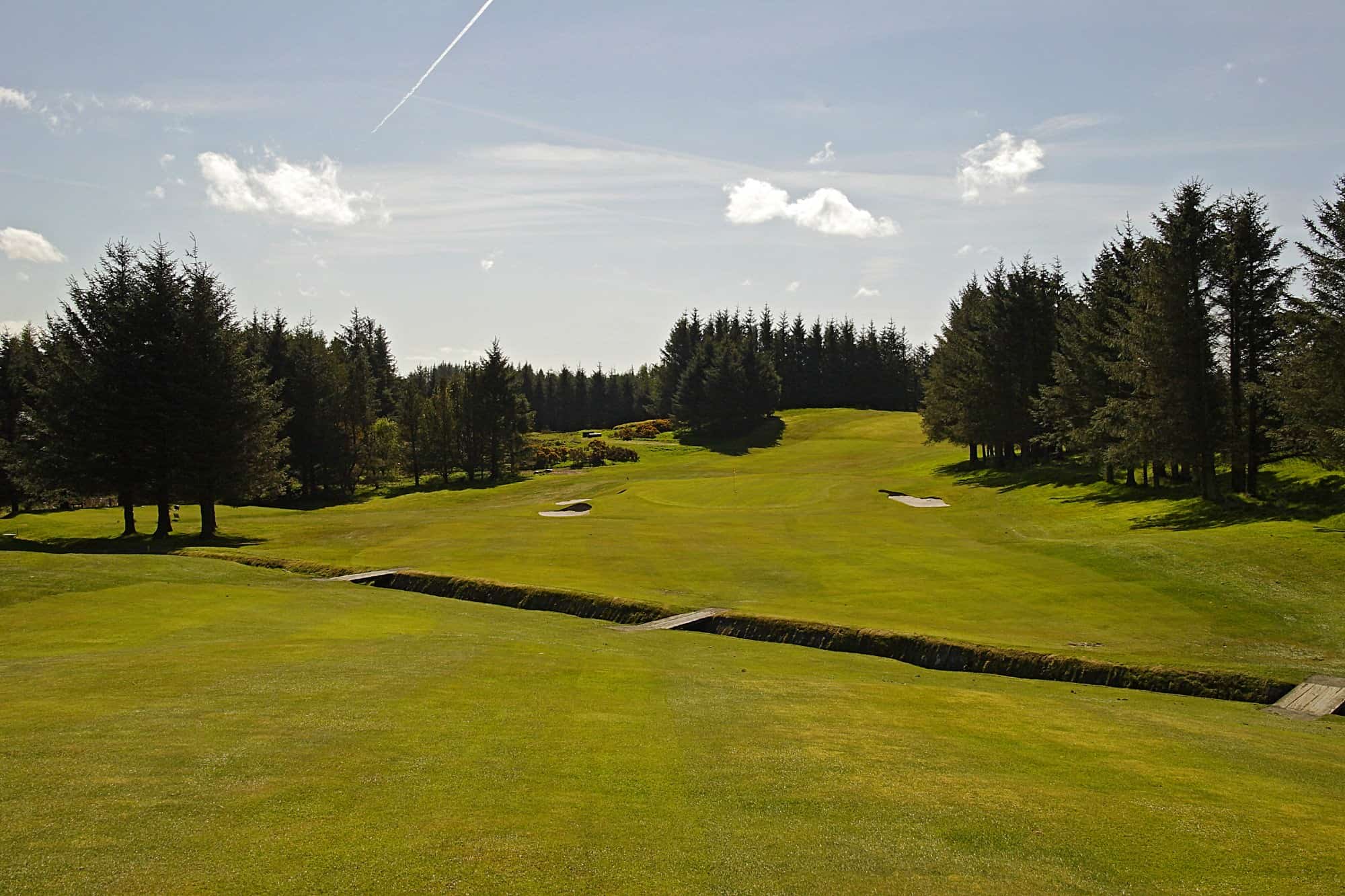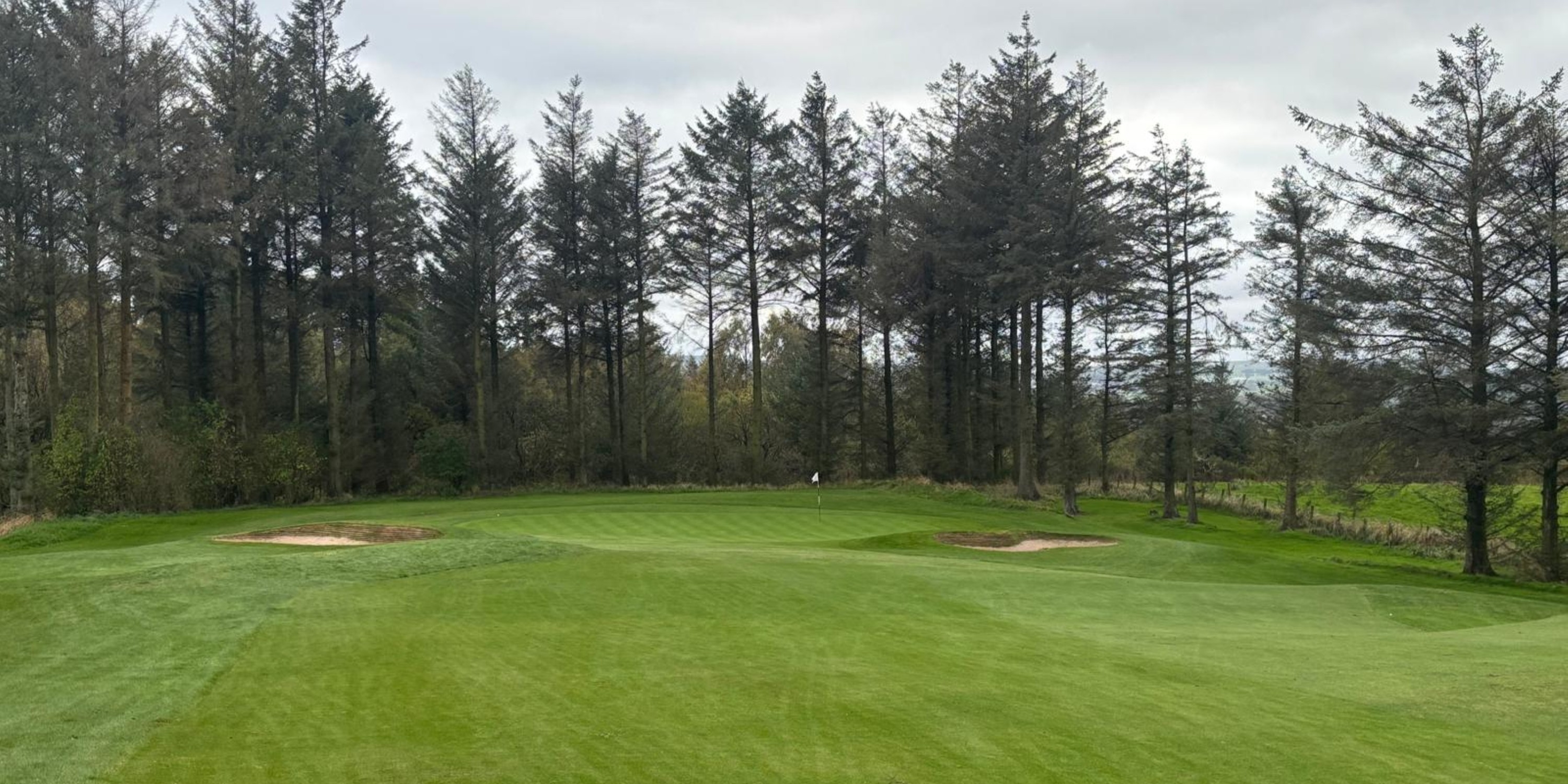Bonnyton
Bonnyton | NCG Top 100s : Scotland Golf Courses
Rankings
6th
100th
Bonnyton Golf Club sits to the south of Glasgow, but perched high above to give great views of Scotland’s largest city.
Dr Alister MacKenzie, who would go on to design Augusta National in his later years, was the man behind the design at Bonnyton.
It is a moorland layout that runs between the trees. There are water hazards and even a blind finishing hole to keep you entertained throughout.
Visit Bonnyton’s website here.
Go back to the NCG Top 100s Homepage.
Advertisement

A Brief History of Bonnyton Golf Club
Bonnyton Golf has recently celebrated a century of history, with the club being founded in the early 1920s.
The great Alister MacKenzie, of Alwoodley and Moortown fame, designed the course over a 15-month period, with its opening coming in 1923.
The club was originally known as Bonnyton Moor, but dropped the ‘Moor’ in the 1950s to be known as Bonnyton, as it remains today.
Bonnyton Golf Club Review | NCG Top 100s: Scotland
Advertisement

Bonnyton is a moorland layout, designed by the great Alister MacKenzie – as one of just few designs north of the border from the Yorkshireman. It sits high above the city of Glasgow, with views of Scotland’s largest city in view at times throughout a round. Depending on the tees you play from, Bonnyton is either a Par 71 or 72, with it playing at 6,320 yards from the tips.
The difference shows on the opening hole, with the Black tee being situated behind a water hazard, while the rest of the teeing options are away from the water, on a different angle. No matter, the OOB down the left side comes in for every tee shot, while the trees on the right can easily block you out for your second shot. Two bunkers on the right of the green add to the danger. There is a burn down the right side of the 2nd, but barring that, there isn’t much to this 400-yard par 4. The 3rd is a short par 4. At less than 300 yards, this sounds like a good birdie chance, but the severe two-tier green might make you think again!
The first of the par 3s comes at the 4th. It is just 145 yards, but played to a green that slopes from back to front, and with a ridge running through the centre of it. Add in OOB to the right and back, and it is a tricky short iron. Depending on which tees you are playing from, the 5th is either a par 4 or a par 5. From the Whites, it is a 533-yard par 5, while from the Blacks, it is a 440-yard par 4. OOB is in play down the left no matter which tees you’re taking to, with the green being a very narrow target in the distance. The 6th is a par 5, 520 yards from the tips. Again, there is OOB down the left, while trees line both sides of the fairway. The green is protected by three bunkers, which might put the longer hitters off from going for the surface with their second shot.
The 7th has one of the narrowest fairways on the course. This 420-yard par 4 requires a long tee shot as well, though, is you are to reach in two. The burn that runs across the front of the green also means your approach has to carry all the way to the surface. The 8th is the Stroke Index 1 thanks to a split fairway, due to the burn that runs diagonally across the fairway from short left to long right. Play down the right side of the fairway for the longest runout, before then aiming towards the well-protected green. The front nine ends with a medium-length par 3. The 9th is 160 yards, with a burn running 20 yards in front of the green, four bunkers protecting the surface and plenty of other nuances to watch out for.
10 is the longest hole on the course. This 540-yard par 5 offers up a great view from the tee box, but don’t let that distract you from the task at hand. The drive needs to be down the left side, and this will play as a three-shotter, simply because of how narrow the hole is. 11 is a tough dog-leg left with another split fairway. Play out to the right side of the fairway for safety, though that will leave a slightly longer approach into the green. Three bunkers sit short of the 12th green, with finding the correct level of the green being key to making par or birdie on this 160-yard par 3. 13 is 330 yards, and with two split bits of fairway, both separate from the green. Work out your distances, especially if the wind is up, as it will affect your tee shot here.
It is rare that you will see a par 3 as the Stroke Index 4 – that's what you get with the 14th at Bonnyton. It is 175 yards, playing severely uphill to a shallow green. Run offs on both sides make finding the green vital. The 15th is a downhill par 4 of just 350 yards, where avoiding each of the three fairway bunkers is the key. 16 is a scorable par 5 at just 480 yards. However, there is a water hazard on the left side halfway down that must be avoided. Water also then sits on three sides of the green – to the left in the form of a pond, while a burn runs across the front of the surface, with another running diagonally at the back right of the green.
A ditch running across the 17th fairway at the 230-yard mark leaves you with a decision to make off the tee. Lay up and you will be left with a longer approach. Take it on, and there is a great chance of making birdie! The final hole at Bonnyton is a 365-yard par 4, but unless you can hit your tee shot to within 100 yards of the green, then your approach will be blind to a small, circular green. The fairway is also severely undulating, making that final approach shot even more difficult. Making a par on the last, especially if you have never played here before, is no mean feat.
FAQs about Bonnyton Golf Club
Where is Bonnyton Golf Club located?
Bonnyton Golf Club is located to the south of Scotland’s largest city, Glasgow, next to the borough of Eaglesham. The centre of the city is just over 10 miles from the club as the crow flies, while East Kilbride is only six miles to the east of Bonnyton. The M77, which runs from Glasgow to Kilmarnock, is close by the club.
Thanks to its proximity to the city, Glasgow Airport is within a 20-mile drive of Bonnyton Golf Club, making the perfect place for international visitors to land at. Edinburgh Airport, the country’s busiest international airport, is only 45 miles to the east, as well. Hairmyres is the nearest train station, with services running via the stop between Glasgow Central and East Kilbride.
Are there any other NCG Top 100s: Scotland venues nearby?
The region south of Glasgow is not one that has any venues on the NCG Top 100s: Scotland list. To find one, you will have to travel either 30 miles east to Lanark, northwest to Kilmacolm or west to West Kilbride on the coast. The likes of Gailes Links, Dundonald Links and more on the Ayrshire coastline, are all around a similar distance to the southwest of Bonnyton as well.
What golf facilities does Bonnyton Golf Club offer?
On the southern side of Kirkton Moor Road sits the driving range and short game areas at Bonnyton. There is a full-length driving range with both grass and matted tees, along with a pair of greens and a practice bunker. The putting green sits between the clubhouse and the opening tee.
What are the green fees at Bonnyton Golf Club?
The price of a green fee at Bonnyton Golf Club changes throughout the year, depending on the season. It is also different depending on whether it is a weekday or weekend.
For more information on current green fees at Bonnyton, visit their booking site here.
Visit Bonnyton’s website here.
Go back to the NCG Top 100s Homepage.
Advertisement

Course Reviews

0.0 | 0 reviews


